| Jutland:
HMS Tiger
By Mike Bennighof, Ph.D.
February 2025
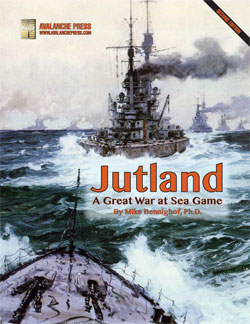 Often held to be the most attractive British
large warship ever built, the battle cruiser Tiger began her existence as the fourth
unit of the Lion class. Two ships had
been ordered in 1909, one more in 1910, and Tiger in 1911. But just before she
would have been laid down at the John Brown
shipyard near Glasgow, Vickers launched a
new battle cruiser for the Imperial Japanese
Navy named Kongo. Often held to be the most attractive British
large warship ever built, the battle cruiser Tiger began her existence as the fourth
unit of the Lion class. Two ships had
been ordered in 1909, one more in 1910, and Tiger in 1911. But just before she
would have been laid down at the John Brown
shipyard near Glasgow, Vickers launched a
new battle cruiser for the Imperial Japanese
Navy named Kongo.
Kongo was an impressive ship, with
eight 14-inch guns in four turrets laid out
for maximum fields of fire. Sir George Thurston,
her designer, had presented the Japanese with
a far better ship than the Royal Navy's Queen
Mary, laid down two months later. The
British had been quite proud of their newest
battle cruisers, nicknamed the “Splendid
Cats,” but the fourth cat could not be
built to an inferior design. Tiger was re-cast into a near-sister
of Kongo, though British publicists insisted
that her improvements were evolutionary and
followed the design of the newest dreadnoughts,
the Iron Duke class. The claim's been
picked up by some amateur writers since, as
well as a few questionable Internet sites, but
a quick look at the ships shows the strong Thurston
influence and many naval journals listed Tiger as a “near sister” of Kongo.
During the design of Lion, constructors
had discussed moving the center (“Q”)
turret aft into a position to fire over the
aft-most (“D”) turret, giving a better
field of fire and freeing space for more boilers,
but this would have increased the cost of the Lion class ships, already the most expensive
British warships ever built and the first with
a price tag topping £2 million.
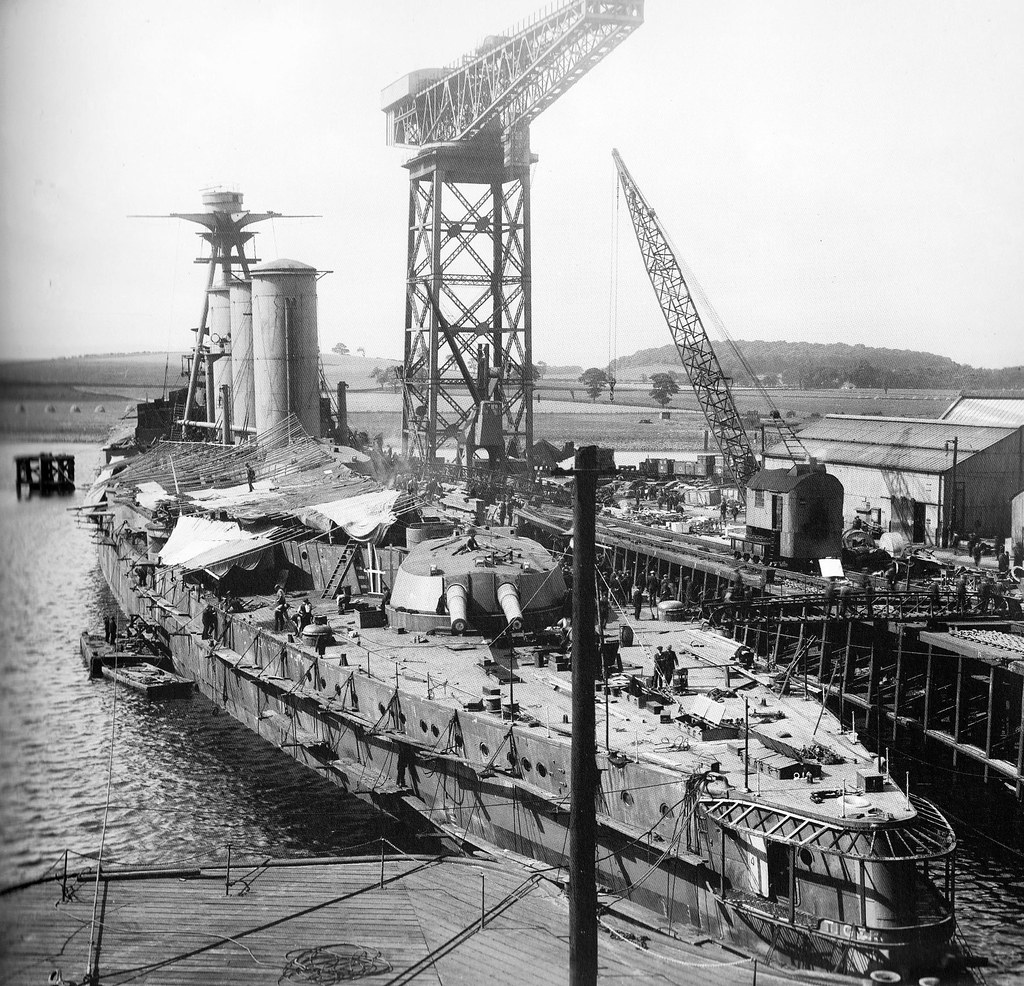 Tiger under construction at John Brown and Company, Clydebank. Tiger under construction at John Brown and Company, Clydebank.
Kongo’s appearance made the changes
necessary for Tiger, and at £2.6
million she was costlier than the Queen
Elizabeth-class fast battleships that
followed and the most expensive warship built
for the Royal Navy until the battle cruiser Renown hit £2.9 million thanks
to wartime price padding. In part because
of her high cost, her proposed sister, Leopard,
was deleted from the 1912 program and eventually
replaced by a sixth unit of the Queen Elizabeth class.
Tiger displaced almost 28,500 tons
and was 704 feet long, making her the Royal
Navy’s largest warship until the commissioning
of the battle cruiser Hood in 1920.
In an effort to increase her speed she received
a massive power plant, and she was the first
British warship to generate over 100,000 horsepower.
Yet she was only a half-knot faster than what Princess Royal managed with 70,000
horsepower, and paid the price of massive
coal consumption plus the lesser protection
common to all British battle cruisers. She
would be the last British major warship provided
with coal-fired boilers, and the only battle
cruiser with a secondary battery of six-inch
guns.
Tiger was not complete when war broke
out in August 1914, and manning her proved
a problem. The Royal Navy faced unanticipated,
massive requirements for crews for auxiliary
craft — minesweepers, anti-submarine
patrol craft and the like. Plus First Lord
of the Admiralty Winston Churchill had hatched
a boneheaded scheme to field a Royal Naval
Division of infantry alongside the British
Expeditionary Force in Flanders (thus allowing Churchill to meddle in the land war as well as the war at sea). This diverted
12,000 highly-trained naval ratings to infantry
combat (requiring them to be re-trained) while
new recruits and rusty reservists were being
feverishly trained for the very skills held
by these men. Many of the officers and seamen
slated for Tiger and the new battleships Benbow and Emperor of India were diverted to the former Turkish battleships Agincourt and Erin. On Churchill’s
instructions Admiralty mobilization plans
had addressed the seizure of foreign ships
building in Britain and allotted funds for
their purchase, but no manpower for their crews.
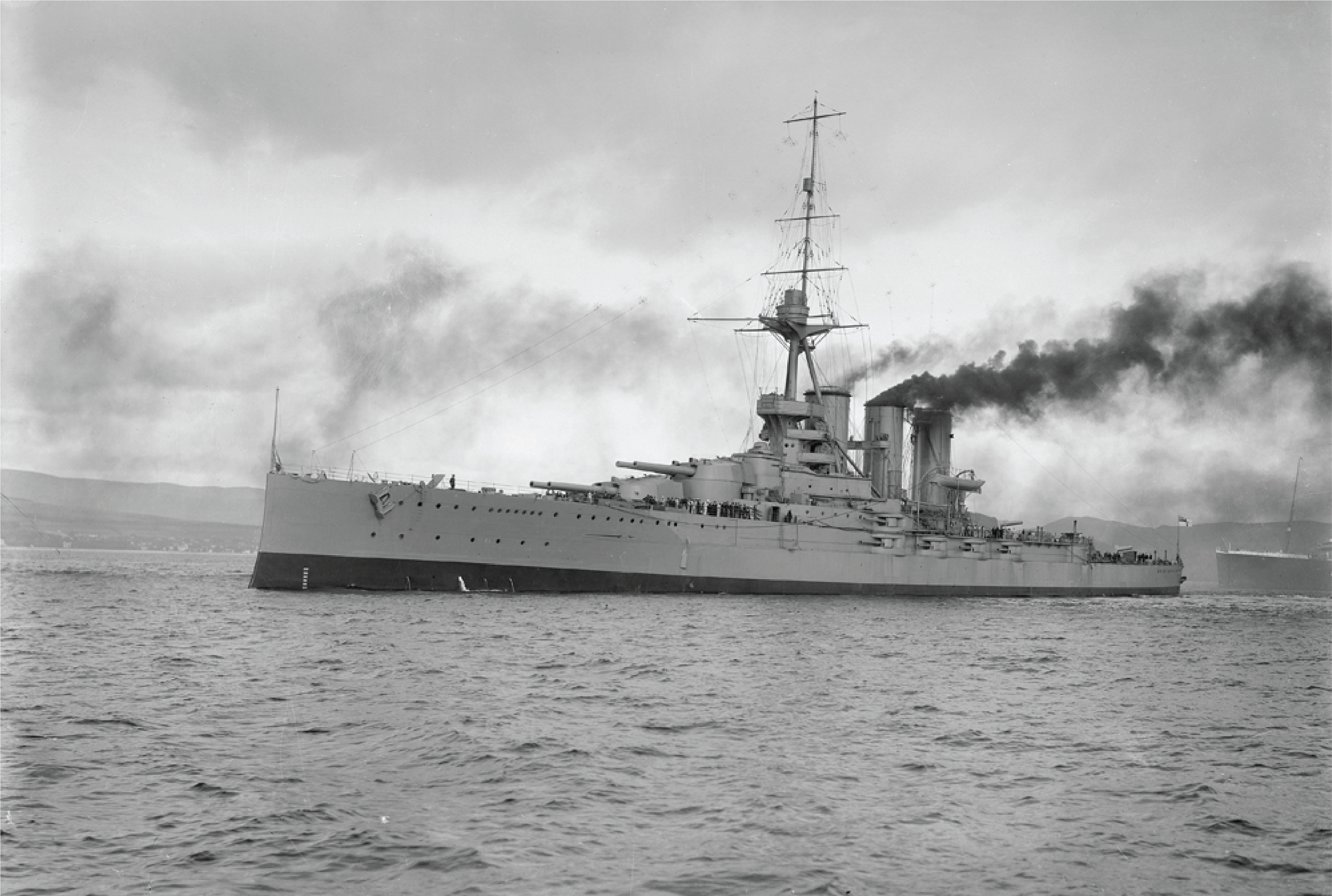 Tiger prepares for trials. October 1914, Berehaven, Ireland.
Tiger prepares for trials. October 1914, Berehaven, Ireland.
As a result, Capt. Henry B. Pelly received a
crew far below the Royal Navy's usual standards.
Captains throughout the fleet donated their
malcontents, incompetents and sea lawyers. The
Royal Naval Division generously emptied its
stockade of seamen-infantrymen charged with desertion. Tiger commissioned in October 1914, and went to Berehaven
in southern Ireland for firing exercises. When
three battle cruisers left the Grand Fleet in
early November to join the hunt for the German
East Asiatic Cruiser Squadron, the Admiralty
ordered Tiger to the Battle Cruiser Squadron
in their place. The squadron commander, Vice
Admiral David Beatty, protested that “Tiger is not yet fit to fight . . . at present she
is quite unprepared and inefficient.” His
superior, Sir John Jellicoe, added his support,
telling the First Sea Lord that “she would
simply be a present for the Germans.”
Nevertheless, Tiger sortied with
the Grand Fleet's other three remaining battle
cruisers during December against the German
ships that shelled Scarborough and Hartlepool,
not sighting the enemy. Unhappy with Tiger’s station-keeping, Beatty sent his fleet engineer,
Capt. C.G. Taylor, aboard to improve her black
gang’s performance and during Tiger's first action, the Battle of Dogger Bank on
24 January 1915, she consistently made 29
knots and led the British pursuit of the fleeing
Germans. Her gunnery proved far less efficient:
She blazed away at the German battle cruiser Moltke to no effect, then on her gunnery
officer's initiative shifted her fire to the
armored cruiser Blücher, obtaining
just one hit and helping to confuse the gunnery
of New Zealand. In all she fired 255
13.5-inch shells during the action, also obtaining
one hit each on Seydlitz and Derfflinger.
Neither was credited in official Royal Navy
after-action reports at the time — and
the fact that Tiger fired on every
German large ship present does not speak to
her credit.
She also suffered three hits from Moltke.
The first knocked out one of the guns of Q
turret and killed two men, the second hit
the ship’s signal distribution center, killing
Taylor and seven ratings. The third struck
her midships boat stowage, igniting the motor
boats’ gasoline and causing a fire so massive
that Moltke reported that her target
had exploded, a result confirmed by the zeppelin
L5. With her signals wrecked, Tiger veered off between the two opposing battle
lines, somehow avoiding more damage but managing
to mask the fire of her compatriots. Repairs
would last two weeks.
The First Sea Lord, Admiral Sir John Fisher,
furiously demanded Pelly’s immediate sacking.
Beatty and Jellicoe both stood up to Fisher.
“Pelly did very badly,” Beatty admitted.
“I think the shell that landed under
the control tower upset them and knocked those
in the conning tower out temporarily although
he won’t say so . . . I have said that Pelly
has done very well up to then, he has had
difficulties to contend with and I don’t think
he is likely to do the same again, but he
is a little bit of the nervous excited type.”
Pelly would show Beatty’s confidence well-placed,
eventually retiring as a full admiral. But
Fisher still required a sacrifice, and Tiger’s gunnery officer, Cdr. Evan Bruce-Gardyne,
had to pay the price. Tiger’s gunnery
had been “villainous,” raged the
First Sea Lord, but the ship’s company manned
the side as he left to cheer him, a mark that
her crew was finally coming together. Once
Fisher had forgotten the incident, Beatty
helped shepherd Bruce-Gardyne back into active
service and he finished the war as Lion’s captain.
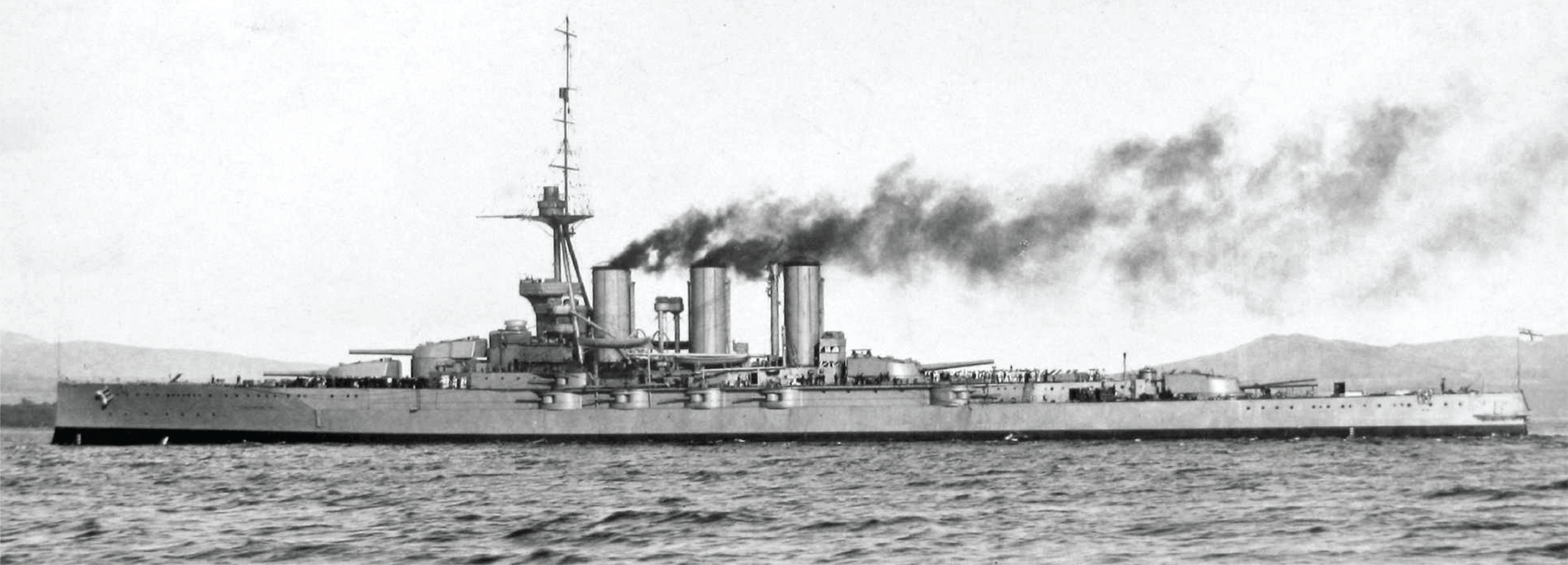
Tiger seen in 1916.
Pelly fought his ship better at Jutland,
but again her gunnery proved abysmal. She
suffered nine hits from Moltke in the
first ten minutes of the battle cruiser action
that began the battle, and never truly recovered.
Half of her guns were temporarily put out of
action, though three would be brought back
into use, and for ten critical minutes she
mistook the light cruiser Regensburg for Moltke and fired at her instead,
allowing Moltke to return fire unmolested.
Tiger did score the only certain hit
by a British ship during the critical early
minutes, striking Moltke, but she also
mistakenly fired salvoes at von der Tann and Seydlitz to help confuse the
other British ships' shooting. She did manage
to hit von der Tann twice, putting
four of her guns out of action, but New
Zealand had to cease fire when splashes
from Tiger’s shells obscured the German
ship.
Later in the action Tiger blazed away
at the German pre-dreadnought division, managing
to once again find the wrong target and obscure
the fire of other British ships. In all, she
expended 303 heavy shells, nearly her entire
outfit, to obtain three hits. She also fired
136 six-inch shells, all of them at enemy
capital ships in direct contravention of standing
orders, for a total of zero results.
In exchange, Tiger suffered 15 heavy
shell hits, one from Seydlitz and the
rest from Moltke. The most serious
penetrated one of the six-inch shell-handling
rooms and set off two shells there. The flash
doors were closed and the magazines were not
threatened, but panicked ratings flooded them
anyway; leaking water also flooded Q turret’s
13.5-inch magazine. Repairs lasted exactly
one month, and though Tiger saw brief
action at Helgoland she never dealt or suffered
any more damage.
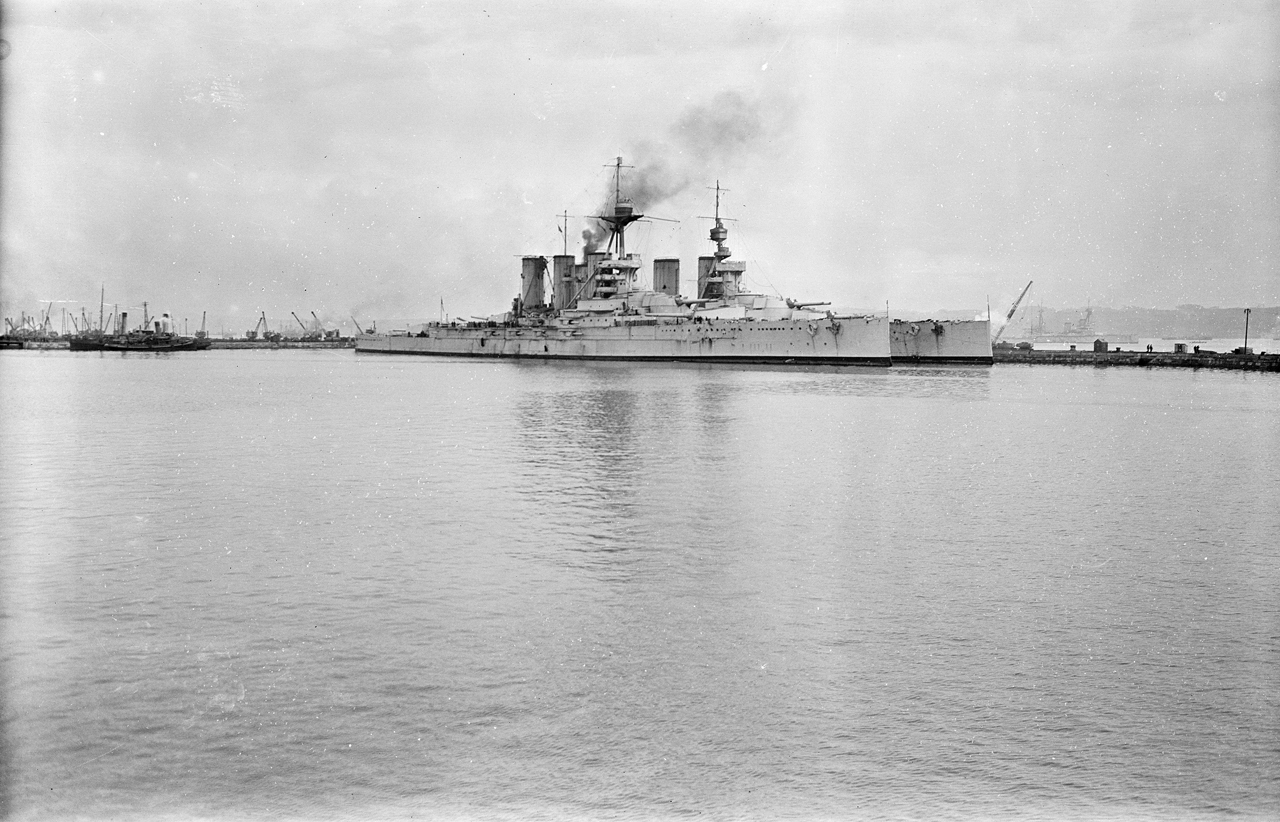 Tiger (foreground) and Princess Royal, Rosyth June 1916 (after the Battle of Jutland). Tiger (foreground) and Princess Royal, Rosyth June 1916 (after the Battle of Jutland).
After the war Tiger served in the new
Atlantic Fleet's Battle Cruiser Squadron. She
survived the Washington Treaty cutbacks that
sent her near-sisters Lion and Princess
Royal to the scrapyards, and after a 1923
refit served for the rest of the decade as the
fleet’s gunnery training ship. Refitted again
in 1929, she then rejoined the Battle Cruiser
Squadron from 1929 until 1931, while Hood underwent a major refit. On Hood’s return,
she was deleted along with the Iron Duke class battleships to comply with the new limits
of the First London Naval Treaty.

Golden Journal No. 46: Iron Dogs includes a huge oversized Tiger piece.
Britain had sought the treaty to contain
costs, and financial pressures made Tiger a logical choice for elimination. She was
in very good condition, but would need a massive
rebuilding to bring her to current standards.
The treaty allowed such steps, but the Royal
Navy's budget did not. Tiger could
have been kept at the cost of one of the slow
battleships of the R-class, as despite their
15-inch guns these were already seen to have
limited military value. But new oil-fired
boilers and turbines would have been required,
and already the much less extensive conversions
of the Queen Elizabeth class were running
over £1 million each. Tiger was
deleted in 1931 and went to the breakers the
next year.
You can order Jutland (Second Edition) right here.
Please allow an extra three weeks for delivery.
The Jutland Saga
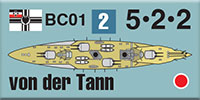 Jutland Second Edition Jutland Second Edition
Jutland: North Sea 1914
Jutland: Dogger Bank
Jutland: Risk Fleet
Retail Price: $233.96
Package Price: $190.00
Gold Club Price: $152.00
You can order the Jutland Saga right here.
Please allow an extra three weeks for delivery.
Jutland 2e: Downloadable Upgrade
You can transform your old copy of Jutland into the splendid new Great War at Sea: Jutland Second Edition.
Sign up for our newsletter right here. Your info will never be sold or transferred; we'll just use it to update you on new games and new offers.
Mike Bennighof is president of Avalanche Press and holds a doctorate in history from Emory University. A Fulbright Scholar and NASA Journalist in Space finalist, he has published a great many books, games and articles on historical subjects; people are saying that some of them are actually good.
He lives in Birmingham, Alabama with his wife and three children. His Iron Dog, Leopold, could swim very well.
Want to keep Daily Content free of third-party ads? You can send us some love (and cash) through this link right here.
|
